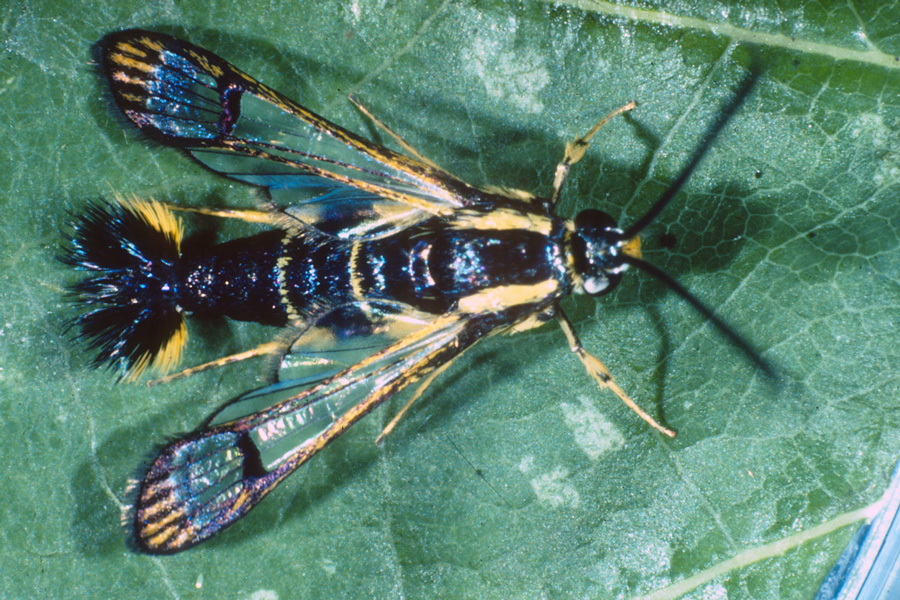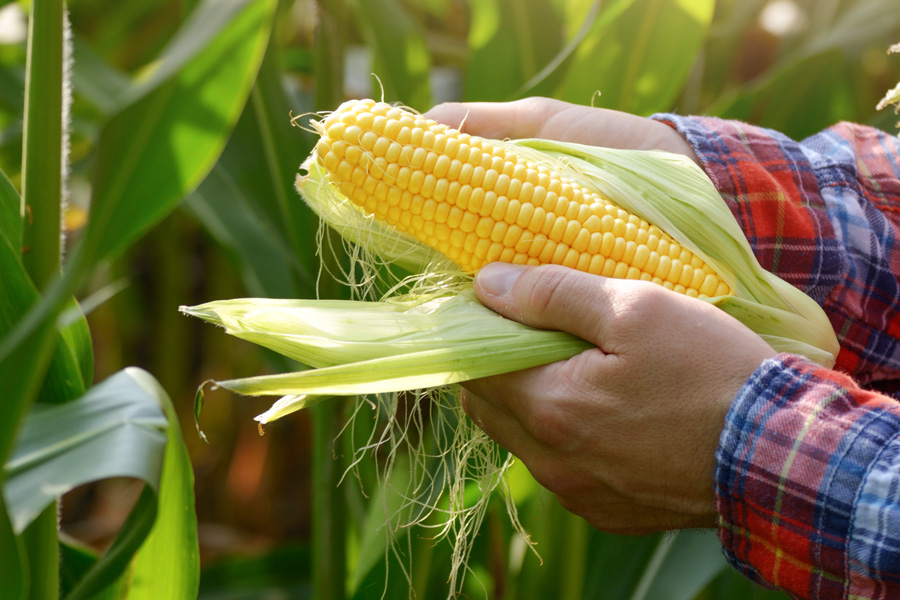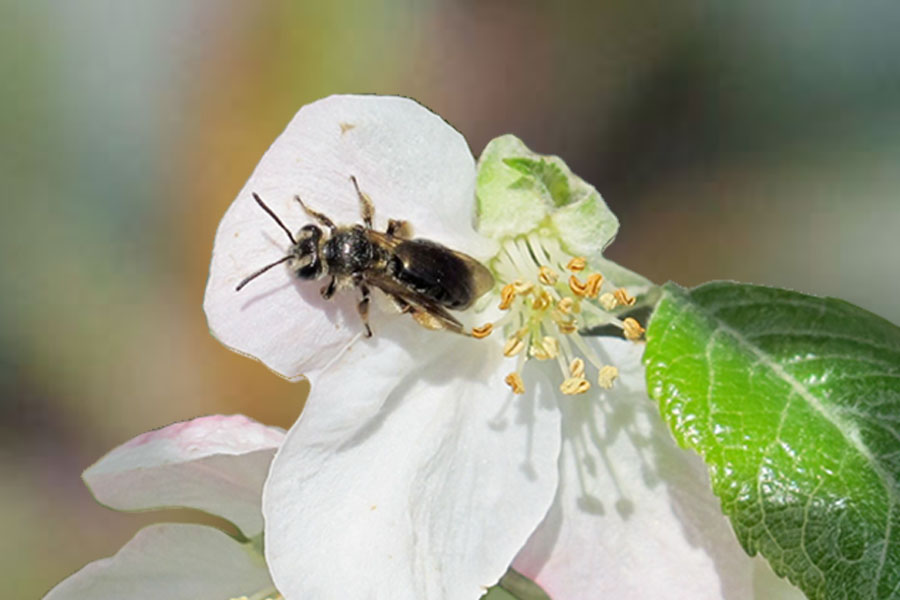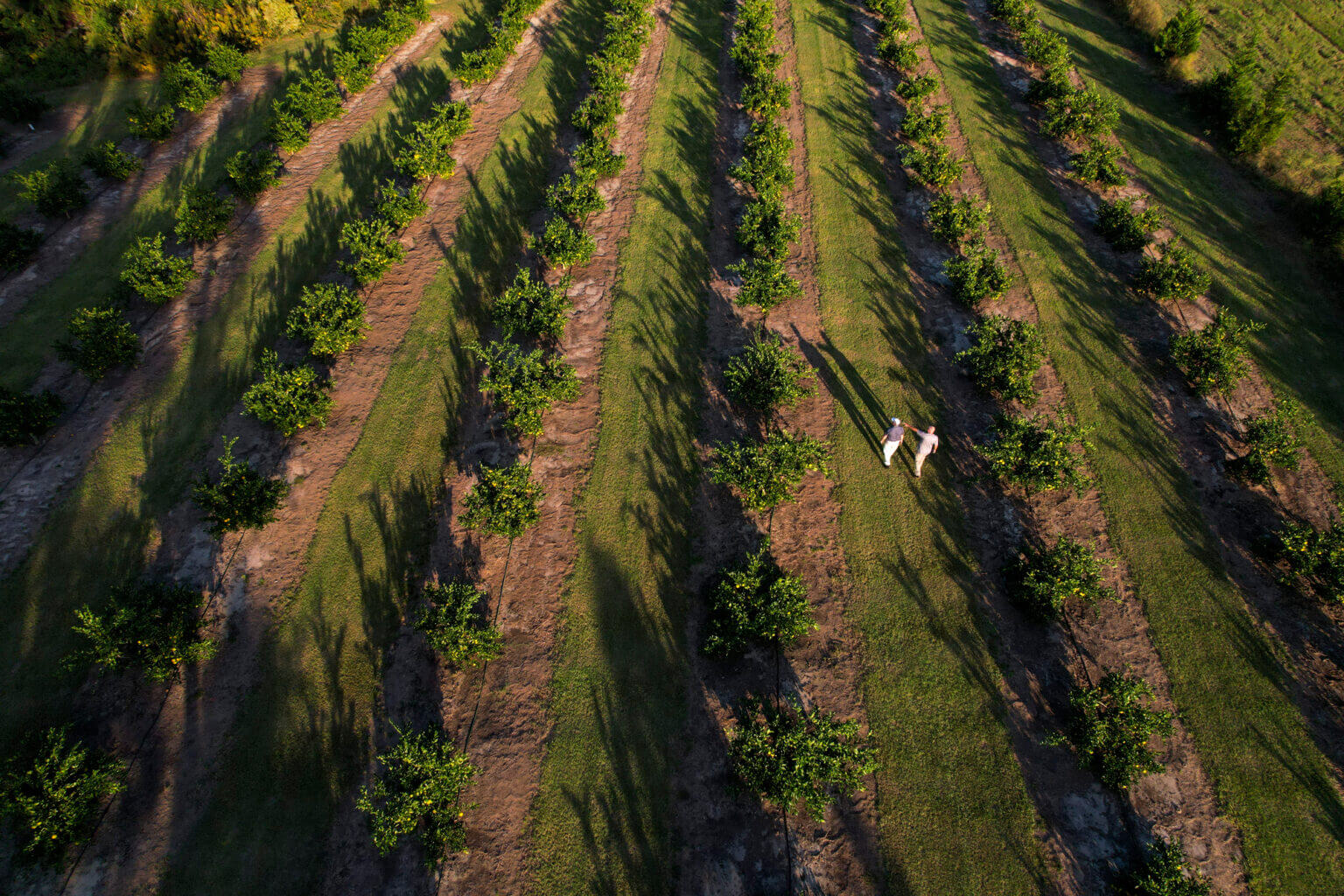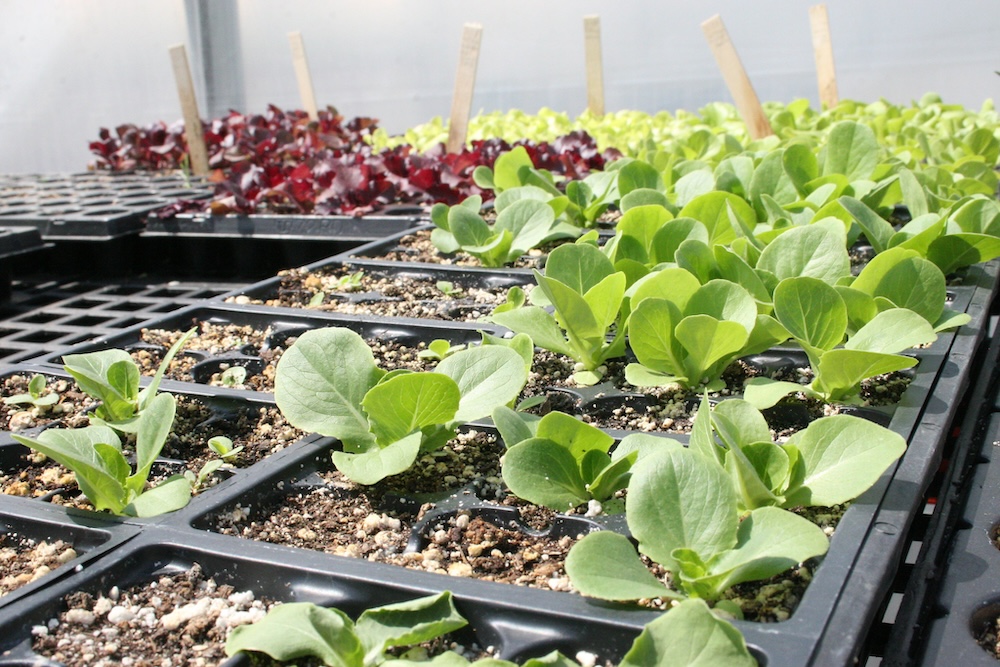WHAT IS SALT TOLERANCE?
Plant tolerance to salt (NaCl) relates to its ability to:
-
Prevent absorption of chloride (Cl) and sodium (Na) ions;
-
Tolerate accumulation of Cl and Na ions; and
-
Tolerate the osmotic stress caused by soil and foliar salts.
Tolerance to salinity varies with the age of the plant, cultivar, growth stage, environmental conditions, cultural practices, irrigation management, and soil fertility. In general, mature plants are more tolerant of salty conditions than seedlings. New succulent growth will be more susceptible to damage from salt spray than older leaves. Plants with thick, waxy cuticle will tolerate salt spray better compared to plants with thin cuticle.
Growers and landscapers should be aware that even though a plant can tolerate saline conditions, its growth may be reduced drastically. This is related to the difficulty roots experience when absorbing water from the soil— the saltier the soil solution, the harder it is for roots to draw water into the plant. In turn, this reduces water available for plants to increase cell size, leading to smaller plants. If the soil solution contains a too-high salt concentration, water may actually leak from the roots, causing damage twofold: the desiccation of plant tissues and the death of root hairs. Root hairs are extensions of the root cells and serve as the main absorptive surface for water and mineral nutrients. If damaged, these hairs cannot recover, and instead, new roots have to grow. All of this causes plant stress.
Salt damage is generally visible as the burning of margins or tips of leaves where the ions accumulate, followed by defoliation and death (Figure 1). Damage from high salts in the soil is generally more uniform over the entire plant than damage from salt spray (Figure 2). Many coastal soils are sandy and thus have lower water- and nutrient-holding capacities. Compared to heavier soils, tolerance ranges for soluble salts in sandy soils are lower than in heavier loamy or clay soils.
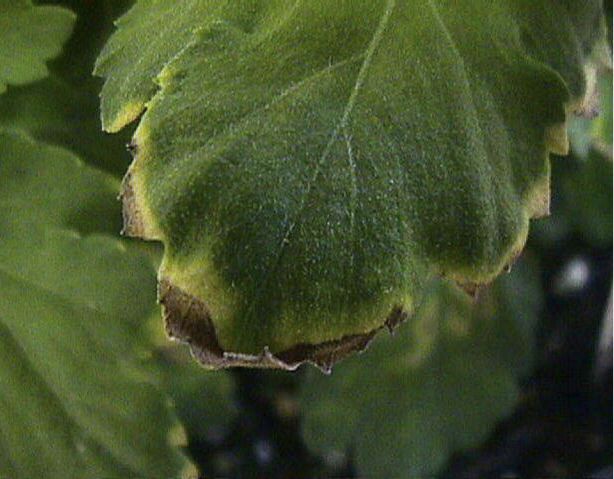
A common way to assess soil salinity is to measure its electrical conductivity (EC), the ability of the soil solution to conduct electricity. EC is expressed in deciSiemens per meter, or dS/m, which is equivalent to milliMhos per centimeter, or mmhos/cm. Since pure water is a poor conductor of electricity, higher soluble salts result in proportional increase in the solution EC. The standard procedure for salinity testing is to measure EC of a solution extracted from a soil wetted to a “saturation paste” (Sonon et. al, 2015).
According to USDA Agricultural Handbook No. 60 (1954), a saline soil has an EC of the saturated paste extract of more than 4 dS/m, a value that corresponds to approximately 40 millimoles per liter, or mmol/L, of salt.
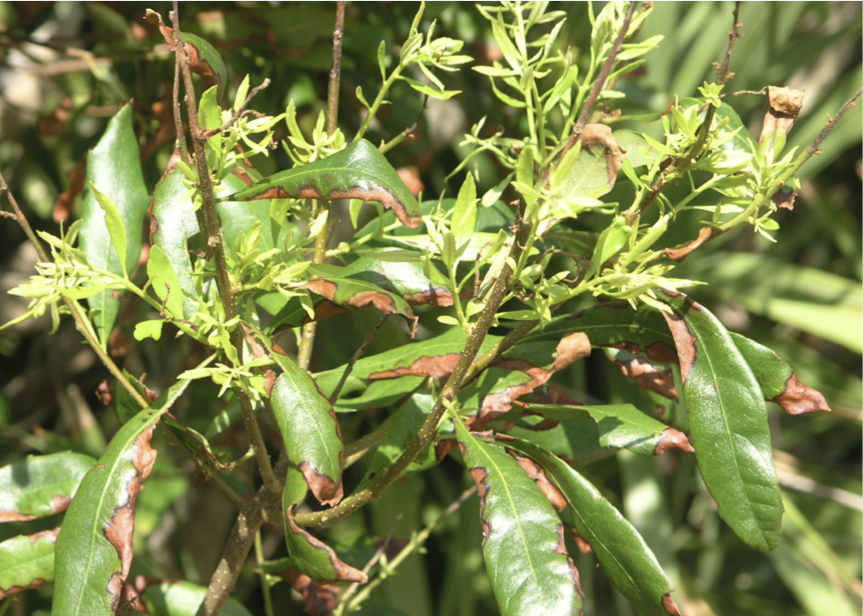
In a sandy loam soil, plants with good salt tolerance can tolerate values of 6.0 dS/m, plants with moderate tolerance 4.5 to 6.0 dS/m, and low tolerance is 4.5 dS/m or less. In California, a salinity reading of 0.5 to 2.0 dS/m is considered safe, 2.0 to 4.0 dS/m is considered moderate, and greater than 4.0 dS/m is considered severe. Soil salinity is determined using a conductivity meter to measure the electrical conductance of all salts in a saturated sample of soil. While it is important to measure the concentration of total salts, it is also important to check the concentrations of specific ions such as Cl and Na, as these two ions are likely to cause damage to plants.Concentrations of Cl (less than 71 parts per million, ppm, or less than 2.0 milliequivalents per liter, mEq/L) and Na (less than 69 ppm or less than 3.0 mEq/L) are considered good for irrigation water. Iron, manganese, and magnesium deficiencies are common in coastal soils.
Landscapers are advised to send a soil sample to the University of Georgia Agricultural and Environmental Services Laboratories (AESL), which offer soil salinity testing to help diagnose and manage problems associated with soil salinity. Refer to UGA Extension Circular 1019, “Soil Salinity Testing, Data Interpretation and Recommendations,” for detailed instructions.
The salt tolerance of landscape plants has been determined using several methods from observation to controlled studies using different concentrations of NaCl. For a thorough listing of salt-tolerant landscape plants and the methods used to determine those plants, see the chapter on salinity in Abiotic Disorders of Landscape Plants: A Diagnostic Guide published by the University of California.
PLANT SELECTION
Table 1 is a list of trees native to Georgia and ranked for salt tolerance based on personal observation and other literature. Personal observations over the years range from St. Augustine, Florida, in the south to Charleston, South Carolina, in the north.
Exotic trees, shrubs that are grown multi-stem as small trees, or trees native to the United States (but not native to Georgia) that we commonly see being able to tolerate wind, salt spray, and to some extent, saline soils, include Butia capitata, Elaeagnus x ebbingei, Ilex cornuta, Ligustrum japonicum, Nerium oleander, Parkinsonia aculeata, Phoenix canariensis, Pittosporum tobira, Rhaphiolepis spp., and Washingtonia spp.
Exotic species that do well with some protection include Acca sellowiana, Callistemon citrinus, Cedrus deodara, Cinnamomum camphora, Cupressus arizonica, Eriobotrya japonica, Eucalyptus cinerea, Ilex rotunda, Nageia nagi, Phoenix dactylifera, Photinia serratifolia, Pinus thunbergiana, Platycladus orientalis, Podocarpus macrophyllus, Trachycarpus fortunei, Ulmus parvifolia, Viburnum odoratissimum, and Vitex agnus-castus (Figure 3).
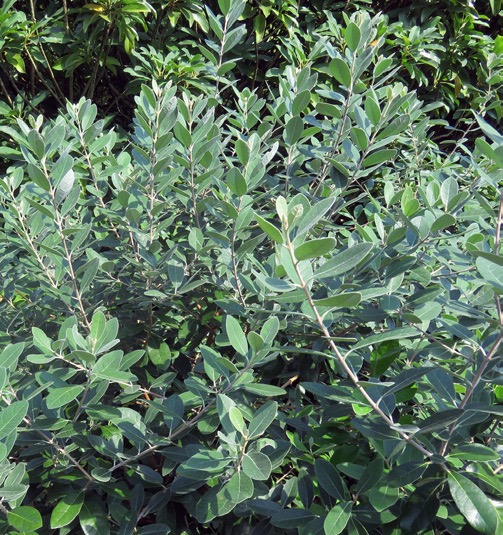
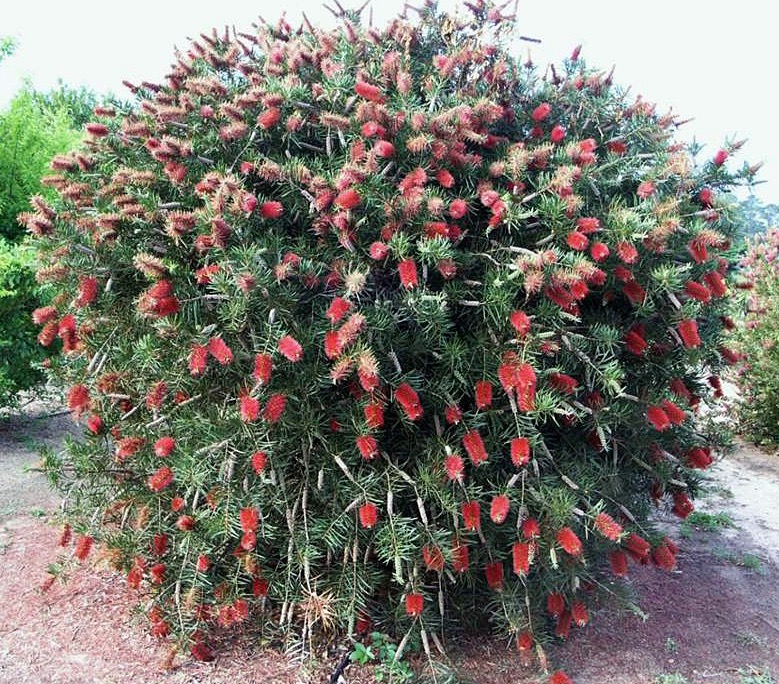
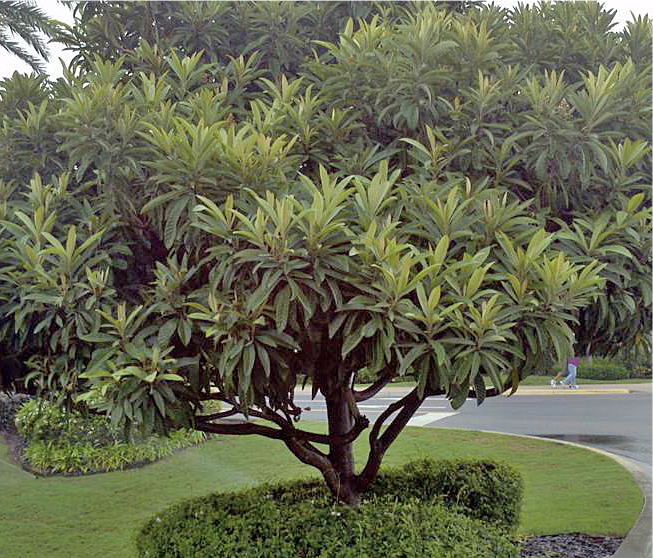
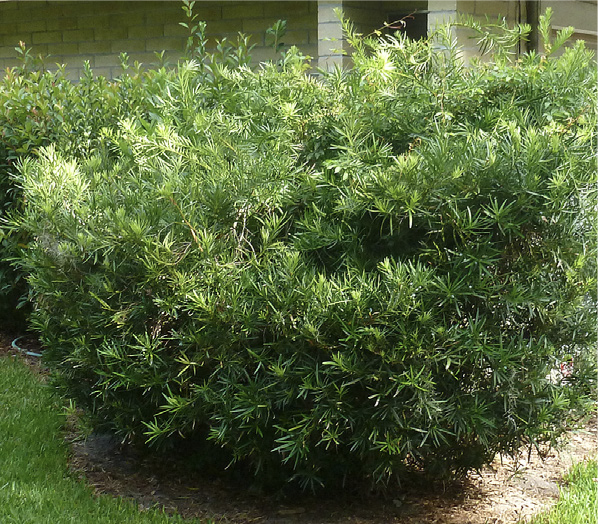
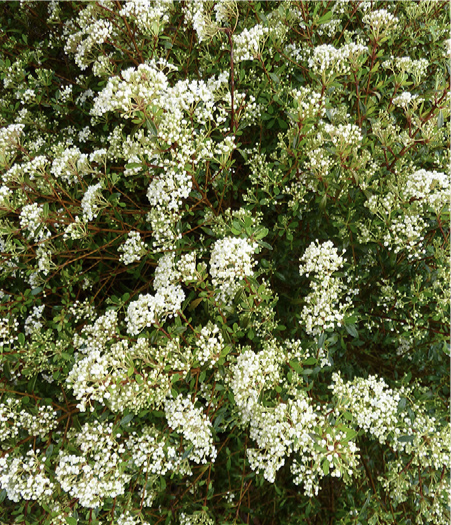
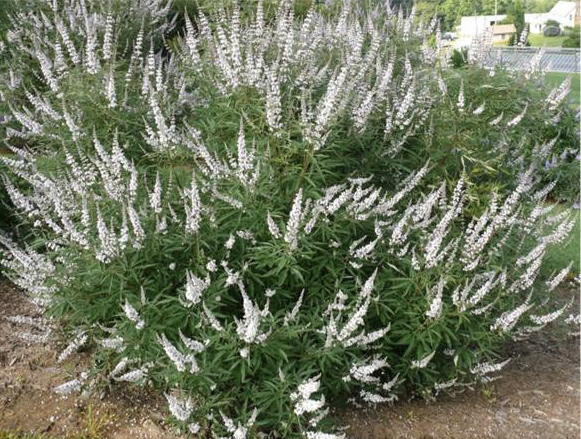
Table 1. Native trees and shrubs and their tolerance to salt sprays or saline soils.
*Salt tolerance: H (high): withstands direct salt spray and moderate soil salinity; M (medium): protects from salt spray but withstands moderate soil salinity; L (low): sensitive to salt.
Some plants will tolerate coastal conditions if planted in areas protected from salt spray or strong winds, thus microclimate becomes important. Drip irrigation can be used on plants that do not tolerate salts on their foliage. Applying additional water to leach ions from the root zone is a cultural method used to improve plant growth and survival. Leaching will remove excess salts from soils that are well structured and have good internal drainage.
Excess salts should be leached below the root zone so that the EC of the soil solution becomes lower than the plant’s critical threshold. The University of Georgia recommends leaching techniques to remove salts from the root zone when EC is greater than 1.25 mmhos/cm at a soil-to-water ratio of 1 to 2. As for the volume of low-salt water needed to dissolve and leach large quantities of salts from the soil, a general rule of thumb is that 6 inches of water will remove about half of the salt, 12 inches will remove four-fifths of the salt, and 24 inches will remove nine-tenths of the salt.
|
SCIENTIFIC NAME |
COMMON NAME |
SALT TOLERANCE* |
|
Acer rubrum |
Red maple |
L |
|
Acer saccharum var. Floridanum |
Sugar maple |
L |
|
Aesculus pavia |
Red buckeye |
L |
|
Amelanchier arborea |
Common serviceberry |
M |
|
Aralia spinosa |
Devil’s walking stick |
M |
|
Betula nigra |
River birch |
L |
|
Bumelia tenax |
Tough bully |
H, M |
|
Carpinus caroliniana |
American hornbeam |
L |
|
Carya aquatica |
Water hickory |
L |
|
Carya glabra |
Pignut hickory |
L |
|
Carya tomentosa |
Mockernut hickory |
M |
|
Catalpa bignonioides |
Southern catalpa |
L |
|
Celtis laevigata |
Sugarberry, hackberry |
M |
|
Cercis canadensis |
Eastern redbud |
L |
|
Chamaecyparis thyoides |
Atlantic white cedar, swamp cedar |
L |
|
Chionanthus virginicus |
Fringetree, old-mans-beard |
L |
|
Cornus florida |
Flowering dogwood |
L |
|
Crataegus marshallii |
Parsley hawthorn |
L |
|
Diospyros virginiana |
Common persimmon |
L |
|
Fagus grandifolia |
American beech |
M |
|
Fraxinus caroliniana |
Carolina ash, swamp ash |
L |
|
Gleditsia triacanthos var. inermis |
Thornless honeylocust |
M |
|
Gordonia lasianthus |
Loblolly-bay |
L |
|
Halesia diptera |
Two-wing silverbells |
M, L |
|
Ilex cassine |
Dahoon holly |
M |
|
Ilex decidua |
Possumhaw |
L |
|
Ilex opaca |
American holly |
M |
|
Ilex vomitoria |
Yaupon holly |
H |
|
SCIENTIFIC NAME |
COMMON NAME |
SALT TOLERANCE* |
|
Juniperus silicicola |
Southern redcedar |
H |
|
Juniperus virginiana |
Eastern redcedar |
M |
|
Liquidambar styraciflua |
Sweetgum |
M |
|
Liriodendron tulipifera |
Tuliptree, tulip poplar, yellow poplar |
L |
|
Magnolia ashei |
Ashe magnolia |
L |
|
Magnolia grandiflora |
Southern magnolia |
L |
|
Magnolia pyramidata |
Pyramid magnolia |
H |
|
Magnolia virginiana |
Sweetbay magnolia |
L |
|
Malus angustifolia |
Southern crabapple |
L |
|
Morus rubra |
Red mulberry |
L |
|
Myrica cerifera |
Southern waxmyrtle |
H |
|
Nyssa aquatica |
Water tupelo, water-gum |
L |
|
Nyssa sylvatica |
Blackgum, sourgum, black tupelo |
L |
|
Osmanthus americanus |
Devilwood, American olive |
L |
|
Ostrya virginiana |
American hornbeam, ironwood |
L |
|
Persea borbonia |
Redbay |
M |
|
Pinckneya pubens |
Pinckneya, fevertree |
L |
|
Pinus elliottii |
Slash pine |
M |
|
Pinus glabra |
Spruce pine |
L |
|
Pinus palustris |
Longleaf pine |
L |
|
Pinus serotina |
Marsh pine, bay pine |
L |
|
Pinus taeda |
Loblolly pine |
L |
|
Planera aquatica |
Planertree |
L |
|
Platanus occidentalis |
Sycamore |
L |
|
Prunus angustifolia |
Chickasaw plum, Cherokee plum |
L |
|
Prunus caroliniana |
Cherry-laurel |
M, L |
|
Prunus umbellata |
Flatwoods plum |
L |
|
Ptelea trifoliata |
Common hoptree |
L |
|
Quercus alba |
White oak |
L |
|
Quercus austrina |
Bluff oak |
L |
|
Quercus chapmanii |
Chapman oak |
M |
|
SCIENTIFIC NAME |
COMMON NAME |
SALT TOLERANCE* |
|
Quercus incana |
Bluejack oak |
L |
|
Quercus laevis |
Turkey oak |
L |
|
Quercus laurifolia |
Laurel oak |
L |
|
Quercus michauxii |
Swamp chestnut oak |
L |
|
Quercus myrtifolia |
Myrtle oak |
M |
|
Quercus nigra |
Water oak |
L |
|
Quercus shumardii |
Shumard oak |
L |
|
Quercus virginiana |
Southern live oak |
H |
|
Sabal palmetto |
Cabbage palm |
H |
|
Salix caroliniana |
Coastal plain willow |
L |
|
Salix nigra |
Black willow |
L |
|
Sassafras albidum |
Sassafras |
L |
|
Stewartia malacodendron |
Silky camellia |
L |
|
Styrax americanus |
American snowbell |
L |
|
Styrax grandifolius |
Bigleaf snowbell |
L |
|
Symplocos tinctoria |
Common sweetleaf |
L |
|
Taxodium distichum |
Bald cypress |
M |
|
Tilia americana |
Basswood |
L |
|
Torreya taxifolia |
Florida nutmeg, Florida torreya |
L |
|
Ulmus alata |
Winged elm |
L |
|
Ulmus americana |
American elm |
L |
|
Vaccinium arboreum |
Farkleberry, tree sparkleberry, huckleberry, winter huckleberry |
L |
|
Viburnum rufidulum |
Rusty blackhaw |
L |
|
Zanthoxylum clava-herculis |
Pepperbark, Hercules’ club, prickly ash |
H, M |
SUMMARY
The selection of plants for the salty coast is limited by the numerous environmental and chemical factors which influence plant growth. However, with proper plant selection and landscape management, there can be joy in coastal gardening.
References
Barrick, W.E. (1979). “Salt Tolerant Plants for Florida Landscapes.” Florida Sea Grant College. Report 28. Costello, L.R., Perry, E.J., Metheny, N.P., Henry, J.M., & Geisel, P.M. (2003). Abiotic disorders of landscape
plants: A diagnostic guide. University of California Agriculture and Natural Resources Publication 3240. Knox, G.W., & Black, R.J. (1987). “Salt Tolerance of Landscape Plants for North Florida.” Florida Cooperative Extension Circular 758.
Sonon, L.S., Saha, U., & Kissel, D.E. (2015). “Soil Salinity Testing, Data Interpretation and Recommendations.” University of Georgia Cooperative Extension Circular 1019.
Stuckey, I.H., & Gould, L.L. (2000). Coastal Plants from Cape Cod to Cape Canaveral. The University of North Carolina Press. Chapel Hill, NC. Tenenbaum, F. (ed.) 1996. Taylor’s Guide to Seashore Gardening. Houghton Mifflin Company, NY.
US Salinity Laboratory Staff (1954). Diagnosis and Improvement of Saline and Alkali Soils. USDA Agricultural Handbook No. 60. U.S. Government Printing Office. Washington, DC.



